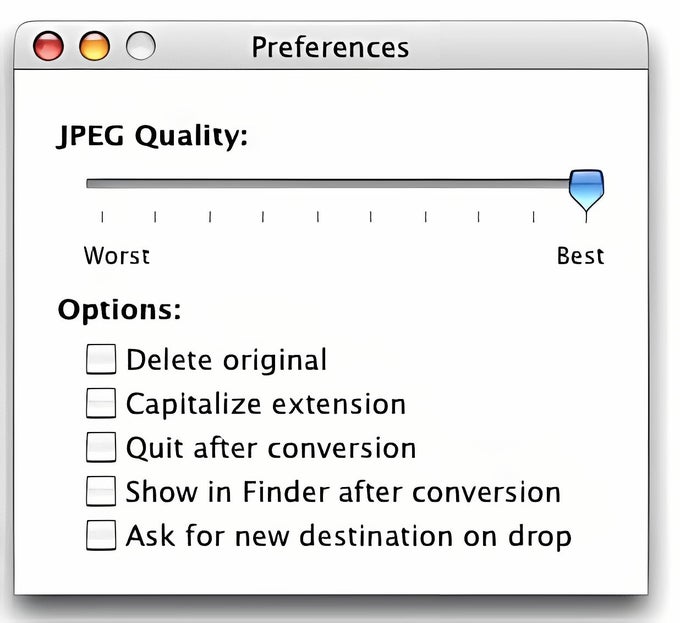Dropjpg For Mac
Having just updated Office for Mac, I have an issue with Word for Mac 2011 Version 14.5.0 on a MacBook Air running OS X 10.9.5, 1.7GHz Processeor, 4 GB 1600 MHz DDR3 Memory. After the Office update, I try to import an bmp image into Word but the image box gets a red cross and the error message 'The image cannot be displayed. Your computer may not have enough memory to open the image, or the image may have been corrupted. Restart your computer, and then open the file again.


If the red x still appears, you may have to delete the image and then reinsert it'. The issue occurs with various bmp files but not jpegs.
However, inserting the same bmps from within Word (Insert-Photo-Picture from file.) works absolutely fine and the bmps display correctly. I have rebooted the machine but with no effect. Any thoughts on a fix gratefully received.

Drag-and-Drop is not the best way to insert an image in Mac Word. Sometimes it works, sometimes it doesn't. Better to use InsertPhotoPicture From File. That way, you know Word is properly connected to the Mac OS X Finder, and can retrieve the correct file path for the picture. On the Mac, all 'File' operations are performed by the OS X Finder: Word does not contain any internal file-handling or printing code. As John suggests: avoid BMP like the plague in Word documents, they are 20 times the size and will give you problems.
Convert those pictures to:. TIFF if you want to keep all the detail and colour in the image. PNG if you can live without 48-bit colour but keep all the detail. JPEG if accurate colour is important but you don't mind losing detail.
GIF if you don't mind losing colour accuracy and want the smallest size. So:. TIFF for full-colour images destined for professional publishing,. PNG for everything else, except. JPEG for photos of people.
Dropjpg For Mac Pro
GIF for line-drawings and office art with no gradient shadings. For almost all purposes, you can use PNG for everything and never need to think about it. If you have photos containing people's faces (flesh-tones.) consider JPEG, but be aware you will lose a bit of resolution (sometimes, a lot, depending on how you set the quality rating). These days, I would not bother with GIF: the modern PNG converters will produce just as compact a file without the colour loss. Hope this helps John McGhie, Microsoft MVP (Mac Word), Consultant Technical Writer.